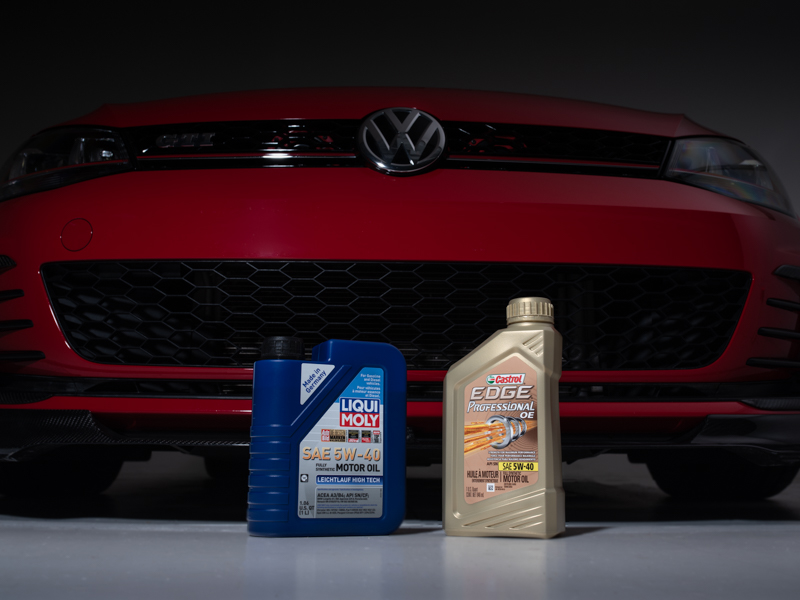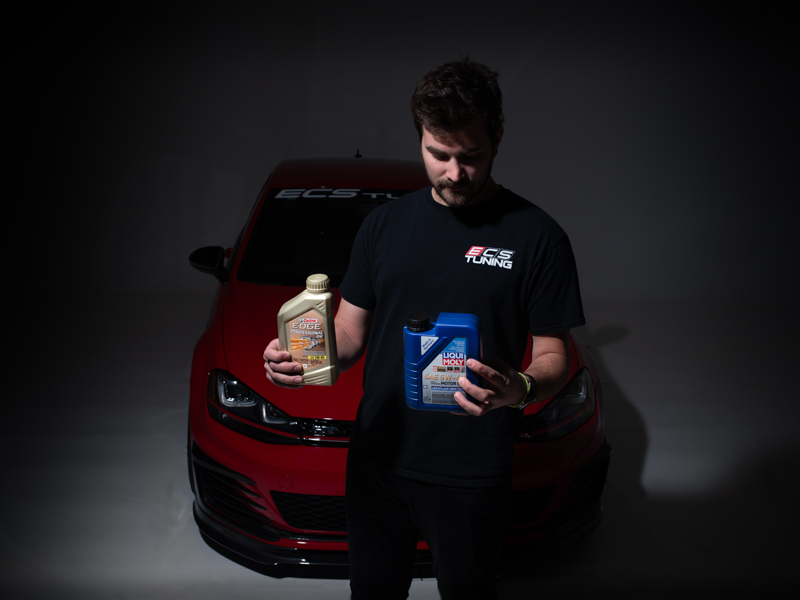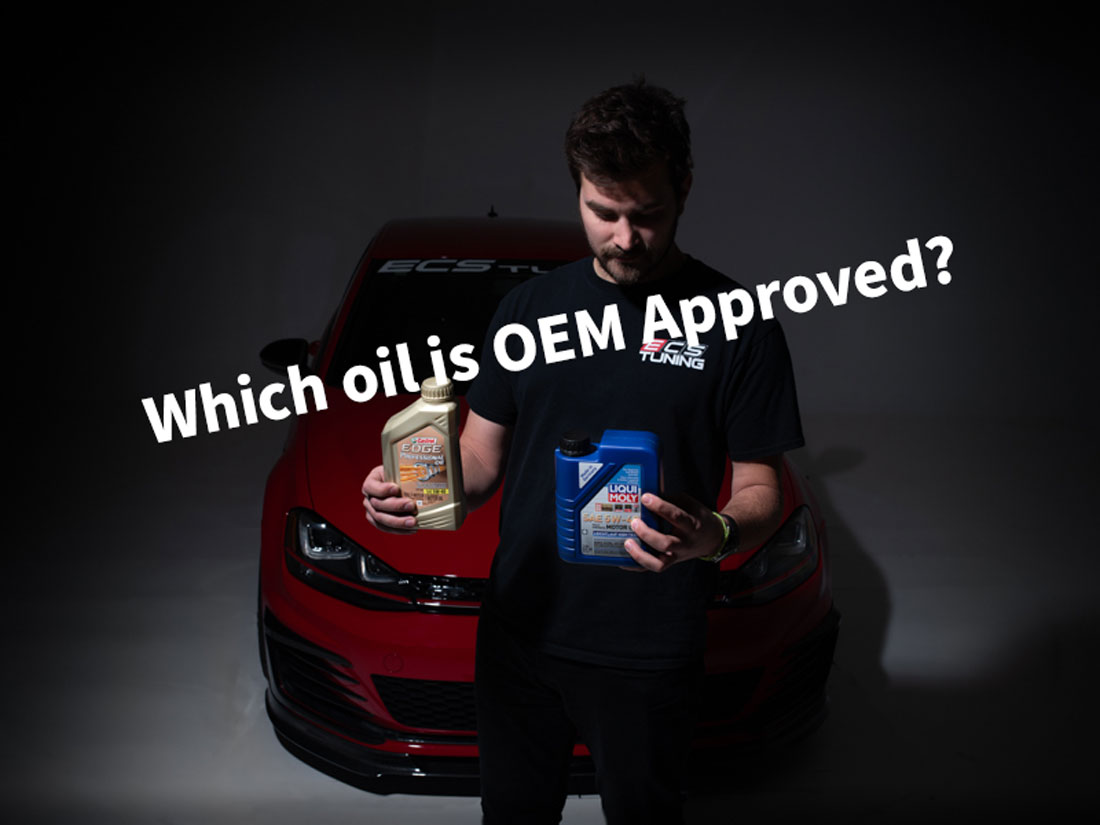Cars, like all machines, require regular service to maintain their operational lifespan. This is common knowledge to just about everyone. Two or three times a year (depending on how much you drive) you can expect to have your car on jack stands in the driveway or at your preferred service center with an oil drain pan catching all that old used engine oil. Fresh oil is so routine the only more regular service is filling up the gas tank. The humdrum oil change usually isn’t given much thought, but the importance of choosing the right oil and servicing your engine properly is critical. Most drivers barely know what the numbers on the oil containers mean, much less what qualities and classifications are required by their specific auto manufacturer. We are happy to answer those questions with the help of our friends at LIQUI MOLY to show you why their oils and additives are the best products to lubricate, cool, and protect your engine.
Not all oil is created equally. In the past, conventional oils were used to lubricate engines. Today, synthetic oils composed of a base oil and additives provide a wide range of benefits and are required by modern engines. About 70% of what you pour into your engine is actually the base oil, while the remaining 30% are those additives that reduce friction and allow for the viscosity, or thickness, to remain in its optimal range. Those additives are part of what makes synthetic oil more effective than conventional oils and often what separates different oil manufacturers in their quality. As well, the wide range prevents the need to change from a ‘summer’ oil to a ‘winter oil.’ LIQUI MOLY oils and additives are designed to perform over the range of temperatures often seen around the world during all four seasons.

So what do those numbers mean? Before we move ahead and talk about the differences LIQUI MOLY offers to provide additional benefits to your engine, let’s talk about temperature ranges and viscosity. The two numbers on oil containers tell you the viscosity of the oil at temperature extremes. For example, 0w-40 oil shows two weights, or viscosities, at two temperatures. 0 is the resistance, or lubrication, at ‘winter’ temperatures, as noted by the ‘W.’ 40 denotes the resistance at operating temperature. The lower the first number, the lower the ambient temperature it can operate while providing sufficient lubrication. You can find the proper weights for your vehicle in your owner’s manual, or refer to our vehicle selection tool that will filter to show you only oil that is approved for your engine.
This is where most people would ask which oil is best and how is that measured. Engine oils are held to standards that ensure they meet the requirements set by organizations that approve the oil for use in your vehicle. In North America, the API standards dictate oil approval. While their requirements are strict and perfectly safe, the highest approval is from OE auto manufacturers. For example, an aftermarket oil can be approved by the API in North America, but not be approved by the OE manufacturer for a specific vehicle. This means either they did not send samples to be tested by that car maker or it did not meet their requirements. Either way, an OEM approval is a sure way to guarantee what you are putting in your engine is what your car demands to maintain its intended lifespan.
LIQUI MOLY oils, like Long Life and Top Tec, carry OEM approval, API approval, and ACEA approval thanks to their high-quality base oil and proprietary additives. Clearly, if Audi, VW, BMW, Porsche, or Mercedes Benz call for LIQUI MOLY to be used as an OE approved oil, you can trust that their lubrication technology is optimal for your car.
So why does my BMW say “Castrol Only” on the oil fill cap, for example? Castrol and BMW had a partnership, as do many lubrication companies with auto manufacturers. This was part of their agreement, but that doesn’t mean there aren’t better alternatives to provide friction control. LIQUI MOLY oils and additives are the best choices, as their properties meet and exceed all OEM specifications, falling in that narrow window of ideal behavior required by OE car manufacturers. This is why they have been consistently voted Germany’s Best Oil for the past eight years.

LIQUI MOLY also offers additional additives that further protect your engine from wear as it ages. Oil by itself contains some additives, but the purpose of engine oil is to keep the engine operating to its expected service life’s end. Wear protection additives, like Ceratec, further prevent deterioration and wear to help extend that life. The ceramic coating from Ceratec provides a protective barrier to help reduce friction, wear, and metal-to-metal contact thanks to its ceramic compounds that are capable of withstanding high thermal and chemical loads. For about 50,000 km you can expect improved efficiency, less engine wear, and better performance thanks to the lower resistance in the engine. Ceratec is recommended by LIQUI MOLY for newer aluminum block engines, where it provides the most benefits. Additionaly, they advise that you flush your engine first, then add Ceratec with your fresh oil. When you go to change your oil the next time, some of the protective coating left by the Ceratec will remain in your engine, which is when you should switch to MoS2 between Ceratec treatments.
MoS2 is an additional additive LIQUI MOLY recommends to further reduce friction and wear. Like Ceratec, MoS2, when mixed with your engine oil, creates a low friction barrier to reduce wear, provide fuel savings, oil savings and improve the reliability of your engine. It produces these benefits by smoothing out the rough surfaces of metal to metal contact, which is what creates wear on those components. The extremely low friction coefficient allows your engine to operate with less resistance and ensures the longevity of those moving parts. MoS2 was originally developed for older engines, but the low-cost additive with these properties allows you to use it on an alternating schedule with Ceratec in a newer engine. Remember, MoS2 will not stay in the engine when you change your oil, so only use it between Ceratec treatments to receive the maximum benefits from both additives.

All the properties of LIQUI MOLY oils and additives on paper make it an appealing choice, but in the age of consumer knowledge, many buyers prefer reading about firsthand experience with the products they are considering. ECS Tuning, and I personally, prefer LIQUI MOLY for all the reasons listed in this article. We built our company on assembling kits that contain the best products, all in one box, tailored for your car, and ready to install when they arrive at your door. For our oil service kits, because LIQUI MOLY oils and additives carry that critical OEM approval, we choose to include their lubricants over other manufacturers. The trusted name, pedigree on and off the track, and quality of the products make LIQUI MOLY the best solution for any European car to maintain a long engine life and efficient operation.
With something as critical to your transportation and car hobby as your engine, it is paramount you maintain it with the highest quality lubricants available. LIQUI MOLY oils and additives are OEM approved to offer optimum wear protection for your engine to operate efficiently. With the proper oil, that is approved by OEM and API standards, you can be confident that your engine is protected and that it will receive the best lubrication for the longest service life. For everything else your car needs, our catalog of Volkswagen parts is full of what you need to keep it in perfect shape.






